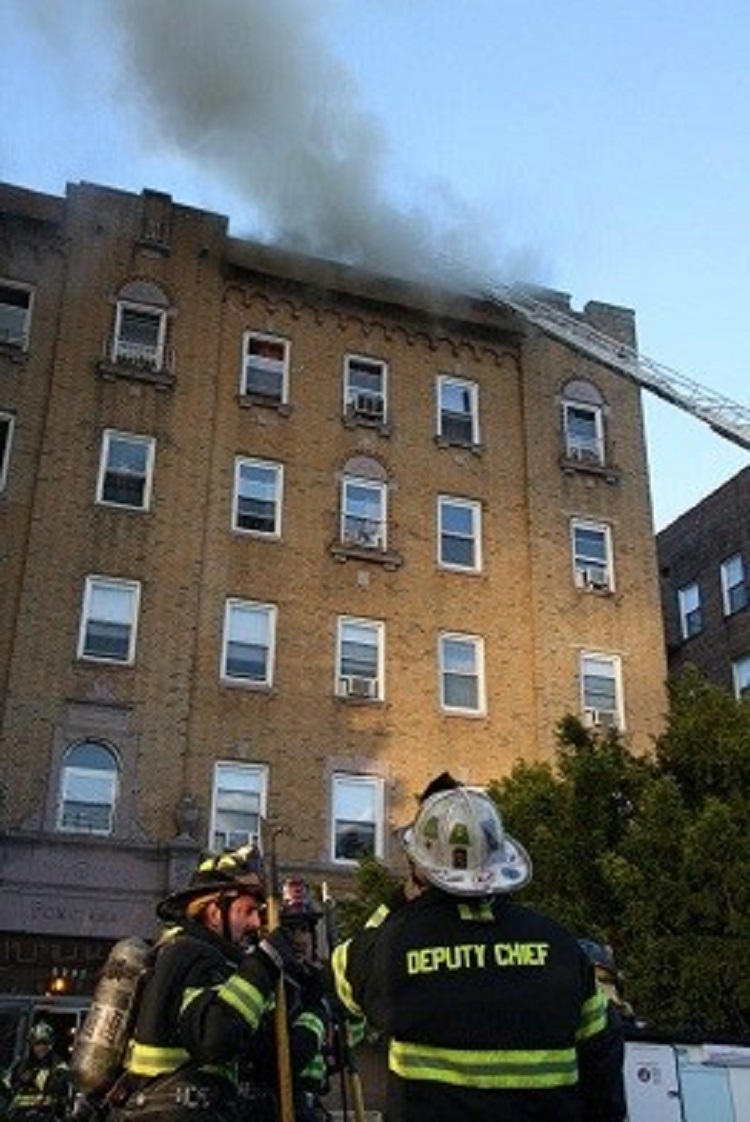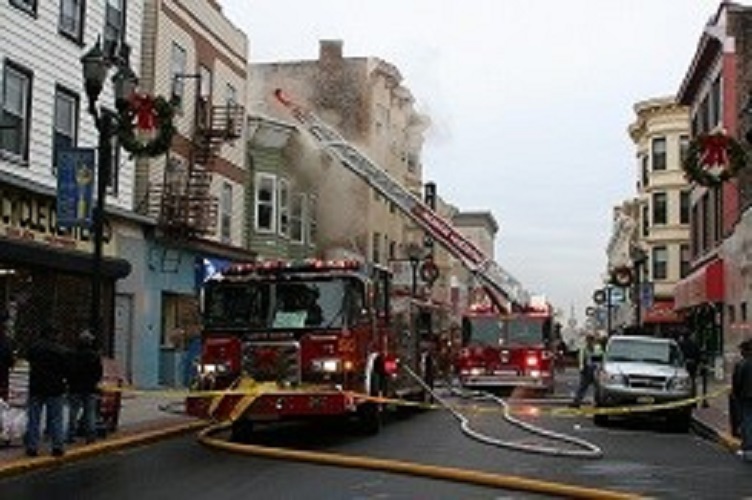
By Anthony Avillo
There is no greater management tool for command than the standard operating procedure (SOP). SOPs are specific prescriptions for action that are designed to focus the fire force on the tasks at hand and reduce any chance for confusion. The heart of command, control, and accountability on the fireground is the creation and enforcement of SOPs. This provides a standardization of assignment on which a solid fireground strategy can be launched and maintained.
Standardization of assignment is a critical piece of the fireground organization profile. It is akin to the playbook for a football team. Each player has a preassigned duty based on the situation. Modifications needed because of various player match-ups, defensive alignment, and field position allow for some flexibility. First-arriving company scene assignments are no different in their scope and need for flexibility. Standardization puts all the players on the same page, given a situation. Without this standardization, operational deviation is not possible without causing mass confusion. You can’t deviate from a plan if there is no plan!
RELATED
Improved Strategic Mode Decisions for Fireground Success
Getting Water on the Fire When Staffing Is Short
Beware the Structural Carcass: Building Collapse After the Fire Is Out
Players and First-Arriving Scene Assignments
Let’s look at some of the players and the value of first-arriving scene assignments to the effective and coordinated meshing of what needs to be done at the outset of fire operations.
Incident commander (IC)Perspective
From the perspective of the IC, there is no more important tasks to be completed at the onset of fire operations than proper apparatus positioning, water supply, hoseline stretching, forcible entry, primary search, roof activities, and horizontal ventilation. We will call these “the essential arrival tasks.” Especially in the nothing-showing environment, recon becomes part of the essential activities. Based on first-arriving assignments, solid recon will ensure that the most information is pushed out to the command post in the least amount of time. If companies are directed to “shake down” the building from various positions assigned by SOP, all areas will be covered, reported on, and can be evaluated as to the next actions to be taken. Incidentally, recon and report are also essential activities whether something is showing or not.
The major advantage of an initial scene assignment SOP is the execution of the aforementioned essential activities as a matter or routine. Having the right players with the right tools in the right place at the right time sets up the organizational structure, creates an efficient communication chain, and provides for accountability. These essential tasks should be executed automatically on arrival. If the IC must assign all these tasks, essentially working at the tactical level, how can he strategically direct the incident. Micromanaging the response is always a mistake. Enforced SOP-directed scene assignments allow the IC to operate at the strategic level.
When the IC feels he must assign each apparatus position, each water supply, each hoseline placement, and so on, how can that IC forecast what needs to be done next? The beauty of the standardization of initial scene assignments is that it allows the IC to take an inventory of what has been covered, what still needs to be covered, and what may not be covered. Additionally, once the positions and essential actions are being conducted, it allows Command to evaluate, based on reports from the areas assigned by SOP, what areas and activities need to be reinforced and supported and what areas might not be an immediate concern. This information and evaluation dictates what later-arriving companies will be assigned. If Command must micromanage the initial assignments, that IC then has no time to think about what the later-arrivers are going to be assigned and will always be behind the game. I have always found it a much smoother ride when the essential tasks were being covered from the outset because I could then think ahead of the fire.

(1) When initial scene (essential) scene activities are being covered, Command can think ahead of the fire and assign later and multiple-alarm companies more effectively. (Photos by Ron Jeffers.)
From the Companies’ Perspective
What is the value of this SOP to the companies? First, if a company is assigned a key position such as water supply or the supplying of a fire department connection, it eliminates confusion on who is doing what and prevents redundancy. Have you ever had two companies think they were the attack engine or water supply? This delays essential tasks. That is one of the other values of the scene assignment SOP: It reduces delays. When everyone knows what they should be doing, it happens automatically–every time.

(2) Proper apparatus positioning is a function of effective initial scene assignments and should be part of the SOP.
Engine Operations
Consider the coordination of engine operations. For a large building or for any building when staffing is short on engine companies, it might be wise to assign the initial attack line to the first two engine companies. With the three-firefighter engine company with which most departments work (where one firefighter is a pump operator), using four people to get a line in service, especially to an upper floor, is much less time consuming then each engine stretching its own line with two firefighters. The support of the engine operations is created by virtue of ladder company positioning and the initial assignment.
Ladder Companies
Speaking of ladder companies, assigning forcible entry prior to arrival will put the right tools in the hands of the right people in the right place as the line is being stretched and prepared. Also, those firefighters assigned primary search duties will be (and feel) much safer if they know a line is being positioned to protect them as a matter of routine. Companies assigned to the roof can burp the building when the line is in place, outside ventilation can be properly coordinated and conducted, vent-enter-isolate-search can take place in a timely manner, and all can be done as part of a team effort like the well-orchestrated operation it is intended to be. Failure to assign or enforce scene assignments burns holes in the operation that creates unsafe conditions and runs contrary to the mission.
Related Articles:
https://emberly.fireengineering.com/articles/webcast-archive/2018/10/fireground-strategies.html
Evacuation Routes
Further, including the rapid intervention crew in the initial scene assignments puts announced secondary egress points in place at every fire incident, allowing companies to operate more confidently, knowing these evacuation routes are available.
Initial scene assignments do not have to be complicated and should cover the most routine assignments. More complex responses such as a high-rise response should have their own specific SOP. Initial scene assignments should cover the tools required for each member (riding position) in the company, basic apparatus positioning, and the area and scope of duty. Properly enforced, it helps the entire team to be on the same page.
BIO
ANTHONY AVILLO retired in 2015 after a 30-year career in the fire service. He was a deputy chief in North Hudson (NJ) Regional Fire & Rescue. He has a B.S. degree in fire science and a master’s degree in national security studies from New Jersey City University. Avillo is the director and deputy fire marshal at the Monmouth County (NJ) Fire Academy. He is also an adjunct professor at New Jersey City University, teaching fire science. Avillo is a member of the FDIC International advisory board and the editorial advisory board of Fire Engineering. Avillo is co-author with Ed Flood of Full Contact Leadership (Pennwell, 2017). He is the author of Fireground Strategies, 3rd edition (Fire Engineering, 2015) and Fireground Strategies Workbooks (Fire Engineering, 2002, 2010, 2016). Avillo has contributed to both volumes of the Pass It On books by Billy Goldfeder (Pennwell, 2015, 2016) and the Tactical Perspectives DVD Series (Fire Engineering, 2011). He co-authored with Frank Ricci the Safety and Survival chapter for the Fire Engineering Firefighter I & II Handbook (Pennwell, 2018). Avillo issued the DVD Control of Fireground Operations and Forging a Culture of Safety (Fire Engineering, 2016, 2014). Avillo was recipient of the 2012 Fire Engineering/ISFSI George D. Post Fire Instructor of the Year Award.

